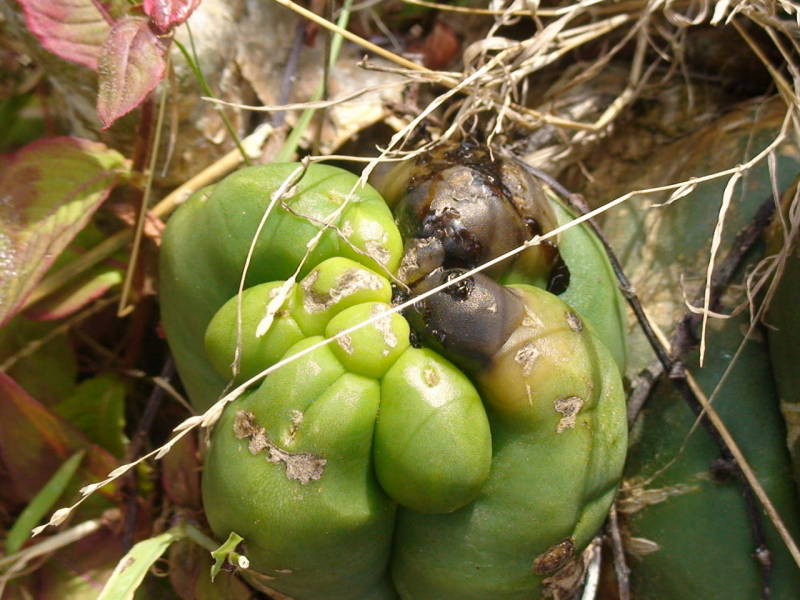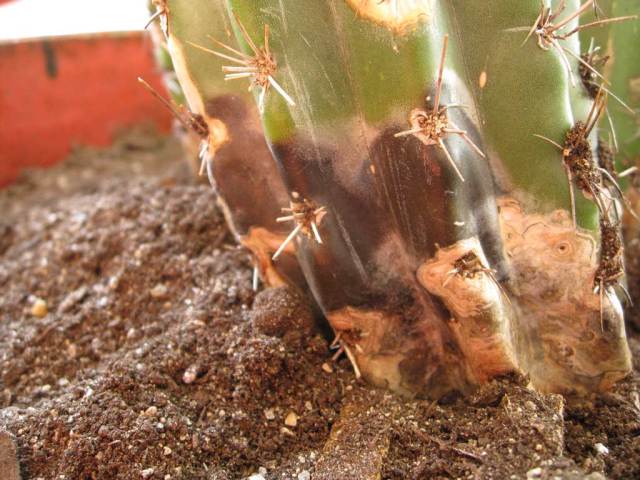
Cactus Black Rot or Stem Rot
Drechslera cactivora
Also known as Cactivorum helminthosporium
Identification
Basal or top rot of seedling cacti that turns cactus into a shrunken mummy covered with brown spores.
First symptoms are yellow spots.
The fungus readily infects young cactus seedlings and causes a rapid
rot of the cotyledons. Whole sowings can disappear in a few days.
On older plants the fungus infects through broken spines,
spine puncture wounds, or stomata and results in a top rot beginning on the shoulder
or growing point. A basal rot near the soil surface may occasionally
occur.
It can completely rot a plant in four days. Plants most affected seem to be in the Echinopsis,Echinocereus, Eriosyce, Trichocereus,Rebutia,Cereus and related genera. Infection rates are highest when there is high humidity and low temperatures, so tends to be worse in the spring and autumn.
Rhipsalidopsis is very susceptible to Drechslera leaf spot and Schlumbergera is moderately susceptible.
The key identification factor is that the fungal spores have a velvety-green coating.
Prevention
Spores are spread by water splash, so if you have a known infection, cease overhead watering and keep watering itself to a minimum.
Take care when growing from seed as spores can be present on the seeds.
Preventative sprays of copper salts (Bordeaux mixture, copper sulphate etc) can be used.
Cure
All infected plants should be immediately disposed of.
The fungicides Chlorothalonil, Captan, Mancozeb or Daconil should give control. Spray at two weekly intervals until no further infection is seen.
More information is available here in a pdf document

